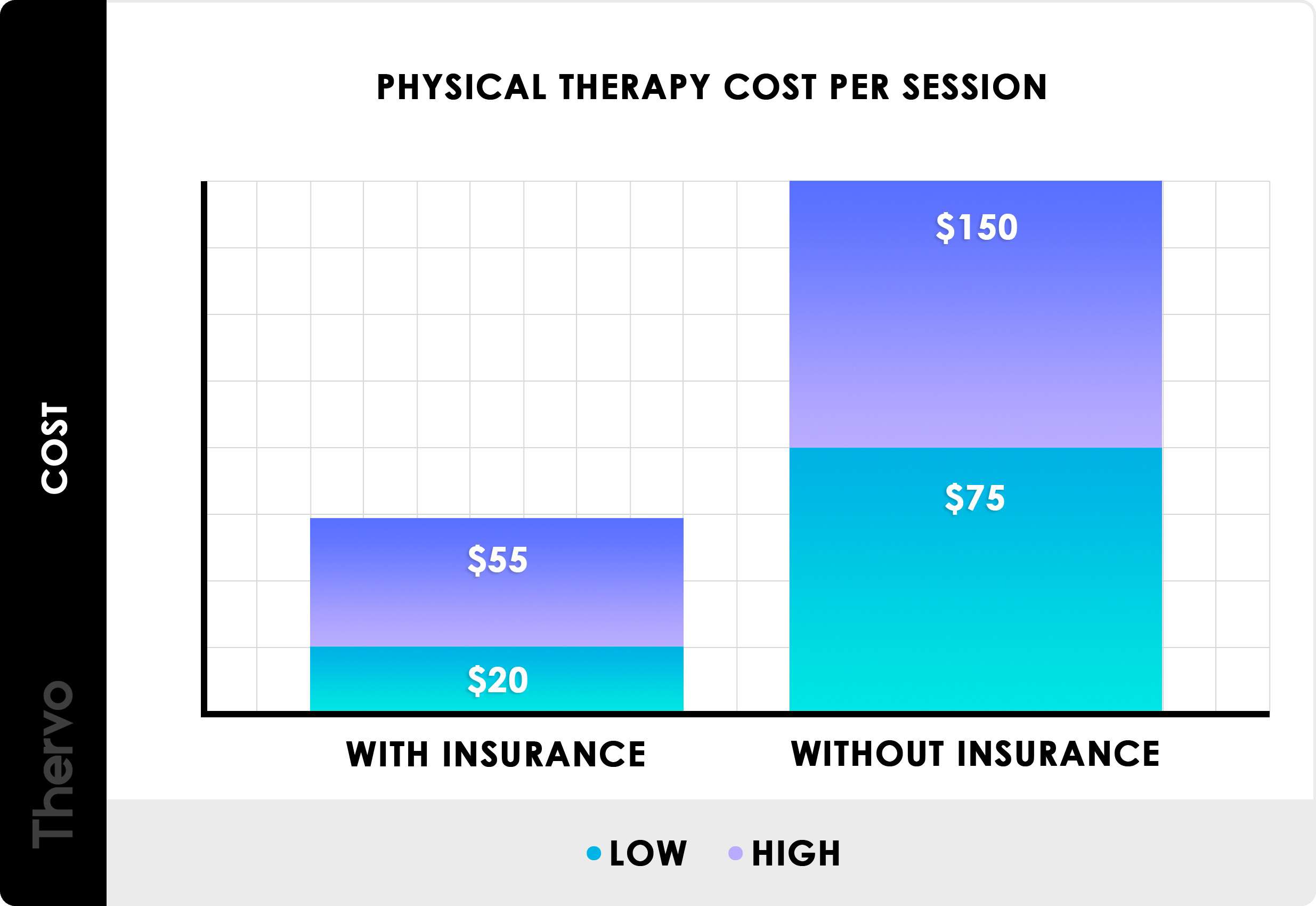Your health, time, and money are three of your most valuable resources, but money can be a huge influence on the other two. Investing in yourself is one of the best decisions you can make, but it can get expensive, especially if you need physical therapy. There are many people who live with daily chronic pain because they cannot afford the means by which they can feel better, and the pain causes stress not only on their physical health, but also on their mental health.
At EW Motion Therapy, we understand that cost is an important question because we hear it multiple times a day at our clinics. In the 20+ years of serving our community, we have become well equipped to understand the costs for our physical therapy services. Understanding a few key concepts surrounding how you are charged will guide you in making the best healthcare and budgetary decisions.
Pricing for physical therapy depends on three factors:
Understanding these factors will help you make more sense of your bill and give you confidence as you plan out your budget.
What is done in your visit
The national average per session cost of physical therapy can range from $30 – $400. However, with a qualified insurance plan, once your deductible is met, your total out-of-pocket cost typically ranges from $20-$60. If you do not have insurance, you may be paying between $50-$155 out-of-pocket. This price range is extensive, and one of the factors that influences that range is the type of procedures done in each visit you have with your therapist.
The Cost Of An Initial Evaluation/Treatment (IE)
Your therapist will perform an IE during your first visit. They will go over your medical history, do a full-body evaluation, create a care plan (including future goals), begin treatment, teach you more about your condition, and prescribe a home education/exercise program. Since an IE is more in-depth than a daily visit, it may cost more.
Your care plan determines how often you see your therapist and how long your treatment will last. Depending on your needs, you may have up to 3 appointments or more per week. Typically, an IE lasts 30 to 90 minutes (about one and a half hours).
- The national average range of an evaluation cost: $50 – $400
- With insurance, average per session, out-of-pocket expense (with deductible met): $20-$60
- National average out-of-pocket expense without insurance: $50-$150
- EW Motion Therapy’s cost range: $55-$220
The Cost Of Daily Visits
Daily visits involve meeting with your therapist to evaluate and progress your care plan. Treatment frequencies follow the guidelines established in the IE and often decrease as you make progress.
A daily visit typically has a lower cost than an IE because therapists can only charge for an IE once. Treatment sessions usually range between 30 to 90 minutes.
- National average cost of a daily visit: $20-150
- With insurance, average per session, out-of-pocket expense (with deductible met): $20-$60
- National average out-of-pocket expense without insurance: $50-$155
- EW Motion Therapy’s average cost: $40-$155
- EW Motion Therapy’s average out-of-pocket expense with insurance: $0-$60
- EW Motion Therapy’s average out-of-pocket expense without insurance: $55-$155
Wanting to try physical therapy for yourself? Click to download 20 Physical Therapy Questions, Answered to learn more.

How the therapist bills your visit
Why are some physical therapy facilities more expensive than others?
There is no one standard way for therapists to bill clients, and the cost of your visit depends on a few factors. How a therapist bills your visit should depend on how much time a therapist spends with a client, the treatment interventions he uses, and coding classification guidelines.
All of these can vary between treatments, clinics, and therapists.
CPT codes
Physical therapists charge for treatment performed with CPT codes (Current Procedural Terminology), as published by the American Medical Association (AMA). Therapists use these codes to charge for an evaluation and classify different treatment interventions. Therapists will bill codes following established guidelines set forth by the AMA and/or CMS (Centers for Medicare & Medicaid Services).
Treatment interventions
Physical therapists utilize interventions to help clients achieve goals. Examples of interventions may include stretching a problem area, doing extra exercises during an appointment, and different procedures such as electrical stimulation, dry needling, and ultrasounds.
Your therapist will use their professional judgment in deciding whether to use an intervention to progress your rehabilitation. Interventions may change from session to session based on the client’s needs at that point in time.
Billable time
For most interventions, you are charged based on time. A skilled, billable intervention(s) should be administered by a licensed physical therapist (LPT) or licensed physical therapist assistant (LPTA). Depending on insurance type, practitioners will follow either the CMS or AMA guidelines for billing. Your session time and the number of allowable, billed treatment interventions will determine the cost.
What does insurance cover when it comes to physical therapy?
When choosing a clinic, it is essential to know which insurance plans they accept and how much your copay or out-of-pocket cost will be. If you do not have health insurance, you will have to pay for all of your treatment out-of-pocket, so keep that fact and your budget in mind.
When considering how insurance will affect your cost, there are three things you need to think about:
- Your insurance plan
- Your deductible
- Your copay
Your insurance plan
In most cases, insurance plans lower your out-of-pocket cost. Health insurance will typically cover 50-80% of the cost of necessary medical services. Also, some insurance companies work out a reduced fee schedule with “in-network “providers.
Your specific plan will cover allowed amounts for different services. You will have to pay copayments (copays) out-of-pocket at some visits, and there is a deductible amount you have to spend before the insurance company covers anything. Each of these can factor into your out-of-pocket costs.
Your deductible
Most plans require you to reach a deductible amount before covering services. Plans with high deductible amounts will increase your cost as you will be paying out-of-pocket until you meet your deductible.
Often, clients with high deductibles may have secondary insurance that covers some or all of their deductible. Those with a high deductible, or those without insurance, may also choose a self-pay option if it is cheaper to pay out-of-pocket.
The average range of insurance deductibles is $100 -$7000+.
Your copay
Insurance plans typically require a copay, an out-of-pocket fee. After meeting your deductible amount, you will pay a copay for each visit. It is always a great idea to review your policy amount before treatment.
Copays are a percentage of an allowable amount, typically 20-30% of the sessions’ cost. If your plan does not have a deductible, you will be required to pay a copay for each visit.
- National average cost of copays: $20-$60
- National average out-of-pocket expense without insurance: $50-$150
- EW Motion Therapy’s average copay: $10-$60
- EW Motion Therapy’s out-of-pocket expense without insurance: $55-$155
Navigating varied costs and insurance coverage
We hope this article has helped you consider the many factors that influence the cost of your treatment. Understanding how health insurance affects your treatment cost can be difficult, and if you would like more information, feel free to read our article on health insurance as it relates to physical therapy.
At EW Motion Therapy, we are so grateful for the trust our clients have placed in us over the past 20+ years, and we are eager to assist you on your health journey. If you would like more information on how to determine the cost of your treatment, watch our physical therapy pricing guide video for details.

Physical Therapy Cost
The average cost of physical therapy can range from $20 to $350 per session with most paying $30 with insurance, and $125 per session without insurance. Physical therapy fees include the initial assessment, use of any special equipment, and depends on the type of injury and treatment received. Also, the number of sessions prescribed will determine your total costs.

Physical Therapy Cost
National
Average Cost$75Minimum Cost$20Maximum Cost$350Average Range
$50
to
$125
When suffering from a recent injury, chronic pain, or limited mobility, a physical therapist can help you manage your pain through science-based exercises called PT sessions. If you’re suffering from a chronic illness such as osteoarthritis, or a neurological disorder, such as a stroke, your primary care doctor may refer you to a physical therapist for rehabilitation.
Patients use physical therapy to recover from surgery, increase mobility, and improve strength or balance. Physical therapy is known to restore physical functions by targeting specific muscle groups or joints. Let’s take a look at all the factors that affect the costs of treatment.
Table of Contents
Physical Therapy Session Cost
Costs for physical therapy depend on if you are paying out-of-pocket or have a health insurance plan that offers a co-pay such as Cigna or Blue Cross Blue Shield. Discounts are usually available for long-term treatment plans.
Physical Therapy Session CostInsuranceCost Per SessionWith Insurance$20 – $55Without Insurance$75 – $150
During a session, your physical therapist will assess your health and prescribe a therapeutic exercise plan to help you start moving and regaining your strength safely. The physical therapist will safely coach you with the aid of medical exercise equipment such as medicine balls, treadmills, weights, resistance bands, and isometric exercises.

A typical physical therapy appointment lasts between 30 to 120 minutes, with most billing on a per hour basis depending on your specific treatment needs. Many physical therapists work together with your primary doctor or specialist to accurately diagnose and prescribe medications.
Depending on your specific needs, you may need a physical therapist that specializes in pediatrics, sports medicine, elderly care, ultrasound treatment for strained muscles, or gait training.
After a surgery or injury, most physical therapists will recommend that you wait anywhere from 6 to 8 weeks before your first physical therapy session. Any swelling needs to go down first to prevent injuring yourself further in your sessions.
Physical Therapy Costs With Insurance
Physical therapy with insurance costs a co-pay of $20 to $55 per session or coinsurance of 10%-50% or more. Health insurance companies cover 50 to 75 percent of the costs when medically necessary. However, coverage begins after you’ve paid the yearly deductible, which ranges from $250 to $1,250 or more.
Typically, your health care provider will require a referral from a specialist or primary care physician for the treatment can be covered or reimbursed. Restrictions may apply according to which hospitals or treatment centers you visit. If your insurance requires a high deductible, consider getting a new insurance provider instead of a new physical therapist.
Talk to a physical therapist today.
Get Help
The standard Medicare coverage has traditionally been between $26 and $30 for each weighted procedure, resulting in an average PT session cost of $100. Those with an original Medicare plan have full coverage for the average cost of physical therapy visits up to a total of $2,040. If you spend beyond that, then you need a physician’s proof that your physical therapy is medically necessary to get additional coverage.
While the cost is lower with insurance, it’s often not free for most people. Usually, your copayments and your insurance premium payments do not count toward your deductible, which must be paid first before insurance starts covering. If you have a plan with an out-of-pocket maximum, then your insurance covers all of your medical costs once you’ve spent this maximum amount within a year.
Average Cost Of Physical Therapy Without Insurance
The average cost of physical therapy without insurance is $75 to $150 per session according to the severity of your injury. Standard out-of-pocket rates for an initial evaluation assessment is $150, or about $225 for one consultation and one training session. Each type of physical therapy procedure during your sessions has different costs.
In-Home Physical Therapy Cost
The average cost for private in-home physical therapy is around $100 to $150 per visit, which covers the added transportation expenses of coming to your home. Home health physical therapy rates are $125 without insurance coverage to treat ACL injuries or provide post-operative care.
Return to Top
Physical Therapy Prices By Injury Location
Your initial evaluation with the therapist can cost $150 or more. They assess what kind of treatments you need as well as the length of your sessions. Each procedure comes at a different price. You could pay around $115 for each quarter-hour of gait training, for instance.
Some PT charges that can cost between $75 and $135 per 15 minutes include electronic stimulation, manual therapy, functional training, and other therapeutic exercises with or without weights and other props. You might spend between $50 and $150 for sessions with cervical traction and other supervised exercises. Check out our physical therapy price list by type below.
Physical Therapy For Knees
The average physical therapy cost for knee injuries is around $100 per session when paying out-of-pocket. When covered by insurance, co-pays for sessions are often between $25 to $68.
With an insurance plan from Aetna, your total knee physical therapy cost could become free after you’ve had five sessions within a year. Recovery time for knee injuries is up to six weeks, depending on the severity of the injury. With the proper knee exercises and strength training, patients often have pain relief within a couple of weeks.

Physical Therapy Price For Back Pain
According to The American Physical Therapy Association (APTA), physical therapy for chronic or lower back pain costs $126 per session with most spending between $1,000 and $1,260 for around 8 to 10 sessions of treatment over six weeks.
Depending on whether or not you’ve had surgery on your back, you may need several months of sessions to recover fully. Physical therapists advise doing simple exercises and stretches to help decompress your spine and relieve common causes of low back pain.
Rotator Cuff Physical Therapy
If you pay in cash, then the physical therapy cost for rotator cuff injuries can cost around $100 for your evaluation and first session, plus $50 for further appointments. On average, the total recovery time is about six months.
According to a survey published by The United States National Library of Medicine, the cumulative cost of physical therapy after rotator cuff surgery is between $2,800 to $3,300. These figures include the total cost of post-operative physical therapy for patients who’d had a surgical rotator cuff repair.
In recent years, doctors have found it better to have patients keep their arms inside a sling to rest entirely for six weeks after rotator cuff surgery. Then they can begin passive-motion therapy. The previous practice of keeping an arm in a sling for only ten days seems to slow down patient recovery, causing more injuries and inflammation.
Pelvic Floor Physical Therapy
The cost of pelvic floor physical therapy is $225 for the first consultation and then $180 after that for each 45-minute session for women who are pregnant or have delivered a child. In a pelvic-floor rehabilitation program to improve bladder health, sessions may cost anywhere from $400 to $600.
Many patients struggling with incontinence prefer paying the lower pelvic floor physical therapy costs since they can prevent the need for surgery. Incontinence surgeries can range from $1,000 to $10,000.
The health of the pelvic floor muscle group is important for bladder control, relieving constipation, and overall reproductive health in men and women. Sometimes pelvic-floor physical therapy sessions could be part of a larger treatment plan supervised by mental health professionals, general physicians, and even sex therapists.
Additional Costs
You could spend between $25 to $100 or more per accessory to continue your physical therapy treatment program by exercising at home. More-expensive equipment like supportive treadmills is generally available for use at your sessions when you visit the physical therapist’s office.
However, other physical therapy aids for home use can be quite affordable. Specialized range-of-motion exercises, resistance bands, exercise balls, rotating tables with adjustable heights as well as hot and cold packs can all help you to rebuild strength in your recovering muscle tissues and ligaments.
Consult with a physical therapist.
View Pros
Return to Top
How To Reduce The Cost of Physical Therapy Treatment
Follow these tips that many people haven’t heard of to save money on your physical therapy:
Private Pay Physical Therapy
If your insurance doesn’t cover physical therapy, the cost of private pay physical therapy can be 30 to 50 percent less when you pay in cash. It is often rare for an insurance company to cover your total cost of physical therapy, so you can offer to pay cash upfront to get a discount. Many clinics appreciate when you pay in cash because it saves them money in the billing process.
Exercising At Home
You can reduce your total expense for physical rehabilitation from $500 a week to $200 or less by committing to doing your recovery exercises at home. The harder you work on your own, the less physical rehabilitation appointments you’ll need to pay for.
Take notes during your sessions so that you can continue these exercises every day. That way, you’ll only require a few sessions to learn the muscle training exercises properly. Ask your physical trainer if you can film them with your phone while they demonstrate the movements if it’s difficult for you to take notes. Then you can watch your recording later to help you remember. You can ask a family member or friend to help you at home with your recovery training if you need assistance.
Stay In-Network
If your insurance provider covers you, they likely already have a list of preferred providers to select from. Staying in-network and selecting one of these medical professionals is a great way to save money.
Today, more health insurance companies are promoting patients to seek out physical therapy treatments first. Statistics show that patients who begin treatment with physical therapy pay up to 50 percent less than what they would typically pay for additional MRI scans, opioid prescriptions, etc.
In some cases, patients who stick to a physical therapy regimen also avoid the even higher costs of surgery. Therefore, the insurance company Humana no longer has a preauthorization requirement for outpatient physical therapy.
Alternative Care
If your insurance coverage doesn’t extend to physical therapy, then seek out community clinics or other healthcare facilities that can provide low-cost physical therapy treatments.
When a doctor prescribes physical therapy for your condition, ask about alternative physical therapy services with sliding scale fees. That way, you will only pay what you can afford according to your current income.
Alternatively, you can visit physical therapy institutes or training centers that sometimes offer free supervised physical therapy sessions to train their students.
In some cases, you can request your physician to send a letter to your insurance company on your behalf. If they explain why you need these physical therapy sessions, then your insurance company may agree to provide coverage for you.
Return to Top
Frequently Asked Questions
Here are common questions we have received from patients:
Why is physical therapy important?
Physical therapy can help you recover your movement and strength by moving your body in a safe and healing way. Patients of all ages, from children to seniors, are prescribed physical therapy to rebuild muscle, ease stiff joints, and restore their flexibility from science-based exercises.
What exactly does a physical therapist do?
Physical therapists treat patients that have chronic conditions, illnesses, injuries, or recovering from a surgery to help them manage their pain and improve their mobility. Physical therapy can help patients who are faced with neurological disorders or provide relief from arthritis.
A physical therapist uses physical movement and therapeutic exercise equipment such as treadmills, medicine balls, weights, and more to help provide pain relief. When necessary, a physical therapist will work in tandem with doctors to prescribe medication.
What are the different types of physical therapy?
According to the American Board of Physical Therapy Specialties (ABPTS), physical therapists can choose from nine areas of specialization. To be board certified, physical therapists must complete 2,000 hours of specialty clinical work and pass an exam, in addition to earning a Doctor of Physical Therapy degree.
- Orthopedics
- Neurology
- Pediatrics
- Oncology
- Geriatrics
- Cardiovascular and Pulmonary
- Clinical Electrophysiology
- Sports Medicine
- Women’s Health
Return to Top
Physiotherapy Vs. Physical Therapy
While physiotherapists and physical therapists use similar treatment methods, electrotherapy treatments are more common among therapists in the United States. Also, a physiotherapist who works at a chiropractor’s office can start treating patients within a few days after their injury. That’s because the physiotherapist often has more training dealing with chronic nerve pain and soft tissue healing.
The terminology of your therapist and the average cost of physiotherapy sessions will change depending on your location. For example, in the United Kingdom, there are only physiotherapists. The same is true in Australia, Canada and most of Europe. They do not generally use the term “physical therapists” as is more prevalent in the United States.
Return to Top
Choosing A Physical Therapist
When you’re suffering from chronic pain, limited mobility, or interested in rehabilitating a long-term injury hiring a physical therapist will help. Physical therapists complete six to seven years of education studying physiology, anatomy, biomechanics, pharmacology, and neuroscience, including obtaining a 3-year Doctor of Physical Therapy (DPT) degree.
Also, physical therapists must complete at least 2,000 hours of supervised clinical work, including orthopedic and acute care, and complete an exam.
- Physical therapists are required to be licensed. Always check with your state’s licensing board to verify.
- Look for positive reviews on Thervo and Google.
- Look for a physical therapist that specializes in your specific problem, such as knees, or lower back pain. If you are rehabilitating from a common injury, you may not need a specialist.
- Check with your insurance provider first for a list of in-network therapists that are covered.
- Ask your primary care doctor for a referral, especially if your insurance provider requires one for coverage.
- Be sure to call or meet with multiple physical therapists to make sure it’s a good fit.
Get free estimates on Thervo from trusted physical therapists:
Get free estimates
7 Sources
- Copays, Deductibles and Coinsurance. (n.d.).
cigna.com/individuals-families/understanding-insurance/copays-deductibles-coinsurance - Coverage Options. Blue Cross Blue Shield. (2017).
bluecrossma.com/bluelinks-for-employers/plans-products/municipal-options/coverage-options.html - Cigna HealthCare Benefit Summary. (2018).
sclhealth.org/careers/benefits/healthcare/medical/2018 - Outpatient therapy costs. (n.d.).
medicareinteractive.org/outpatient-therapy-costs - Utilization and Costs of Postoperative Physical Therapy After Rotator Cuff Repair: A Comparison of Privately Insured and Medicare Patients. (2015).
ncbi.nlm.nih.gov/pubmed/26231991 - Rotator Cuff Surgery Study Suggests Changes in Rehabilitation Needed. (2012).
hss.edu/newsroom_changes-rotator-cuff-surgery-rehabilitation.asp - What is pelvic floor physical therapy?. (n.d.).
issm.info/sexual-health-qa/what-is-pelvic-floor-physical-therapy/




